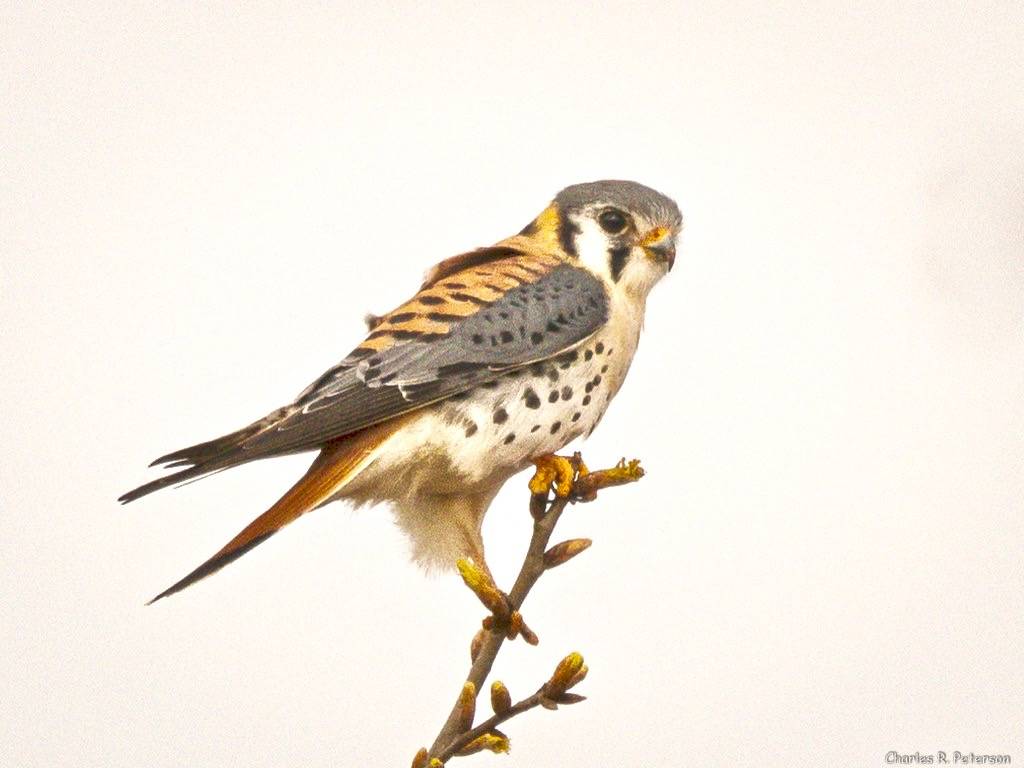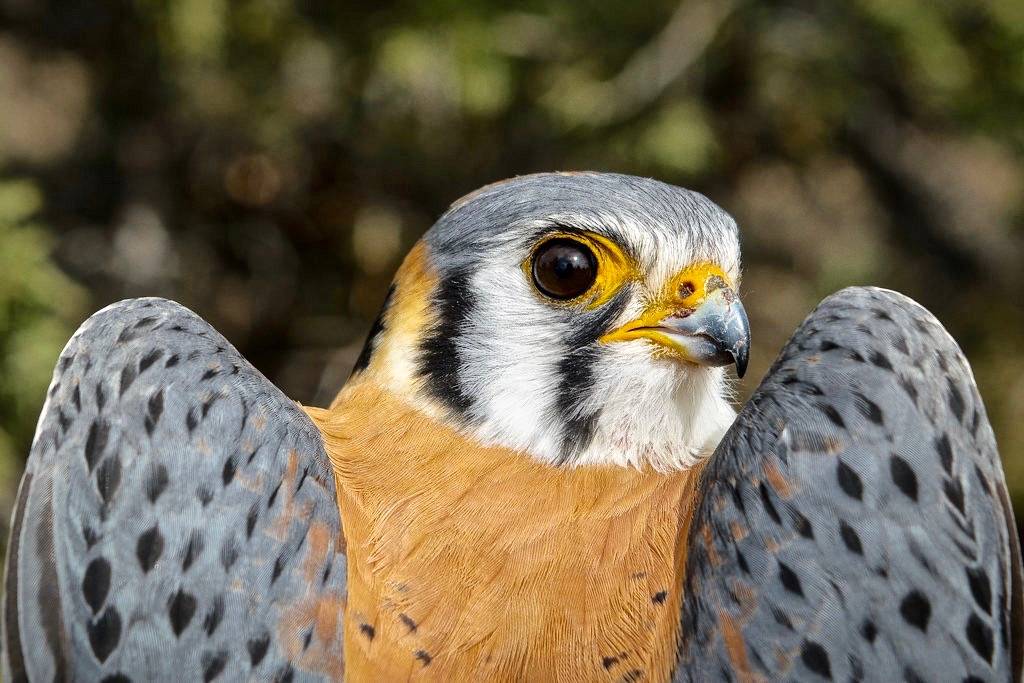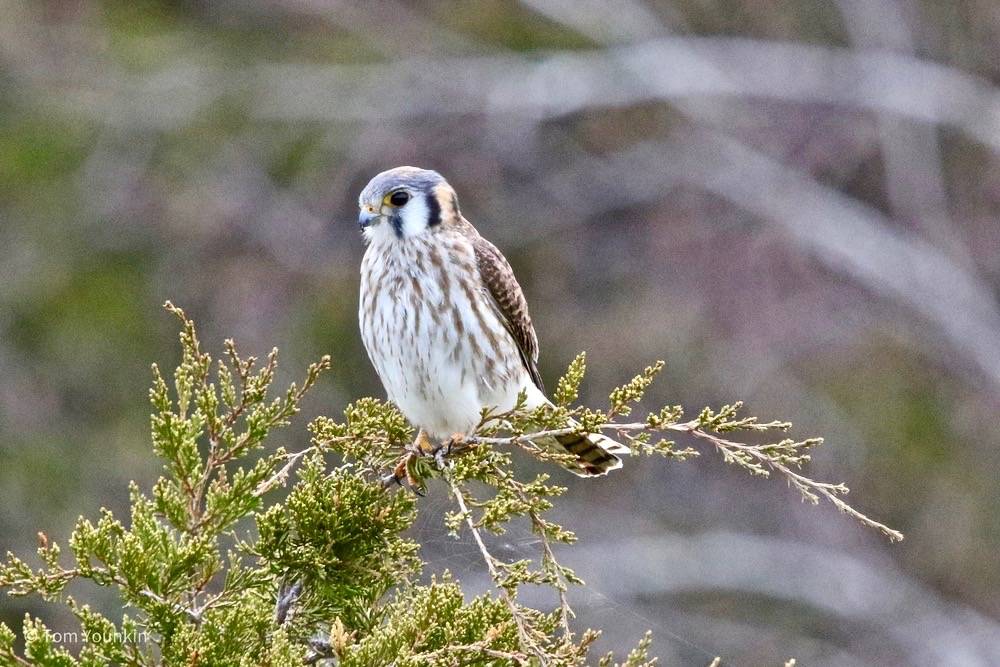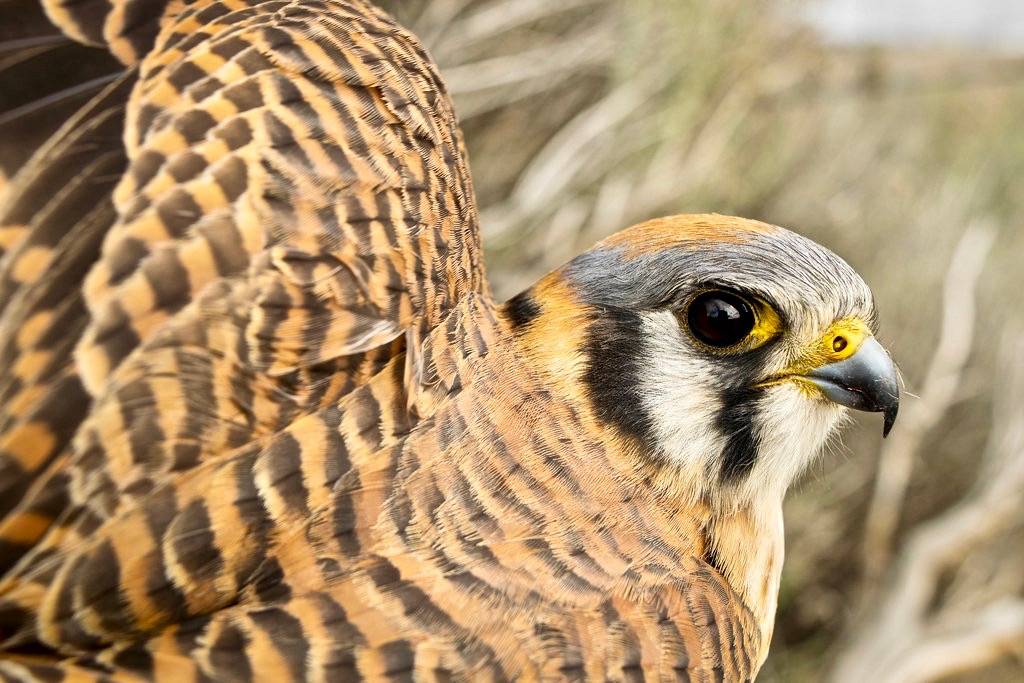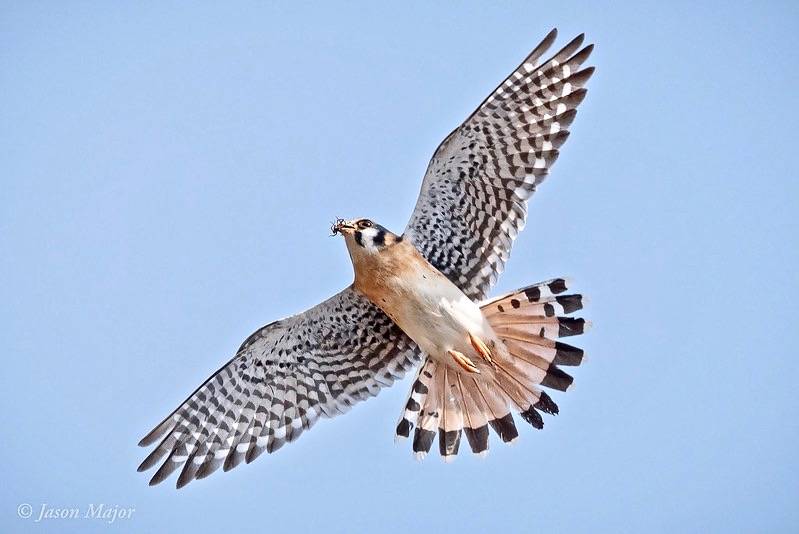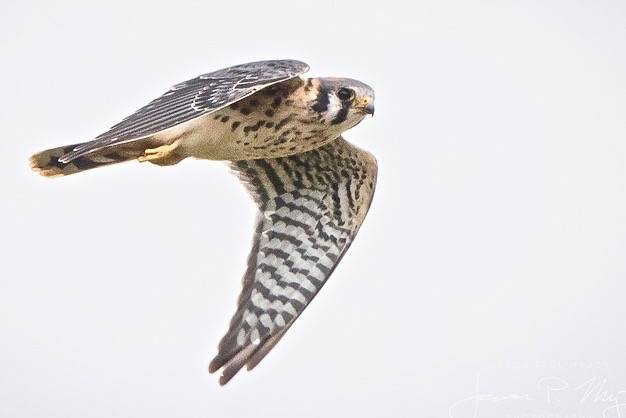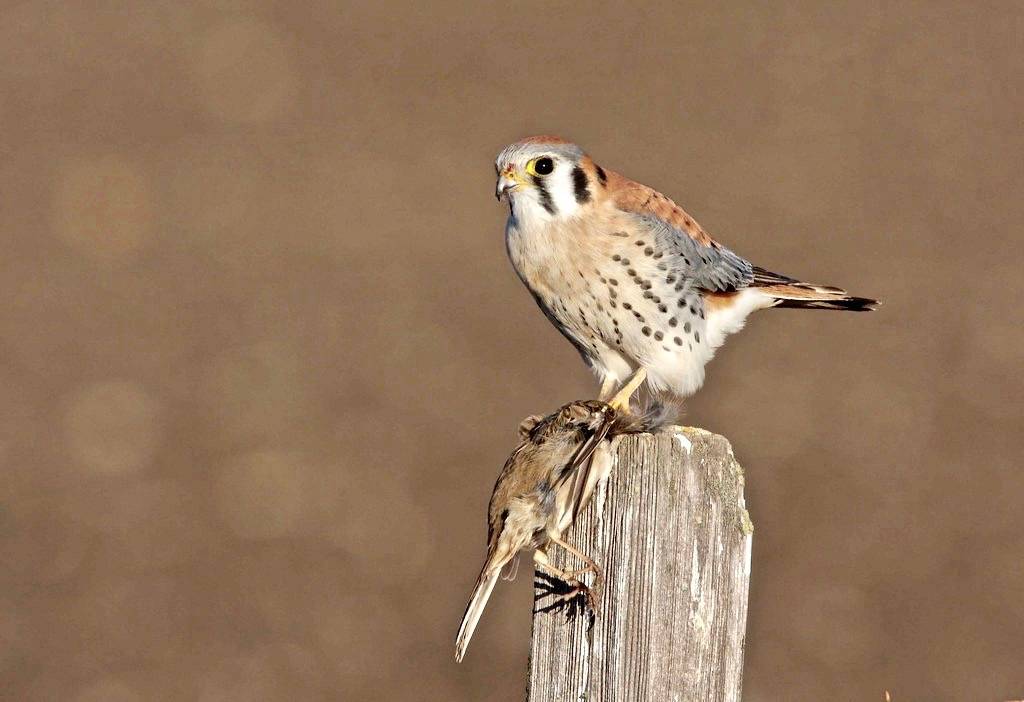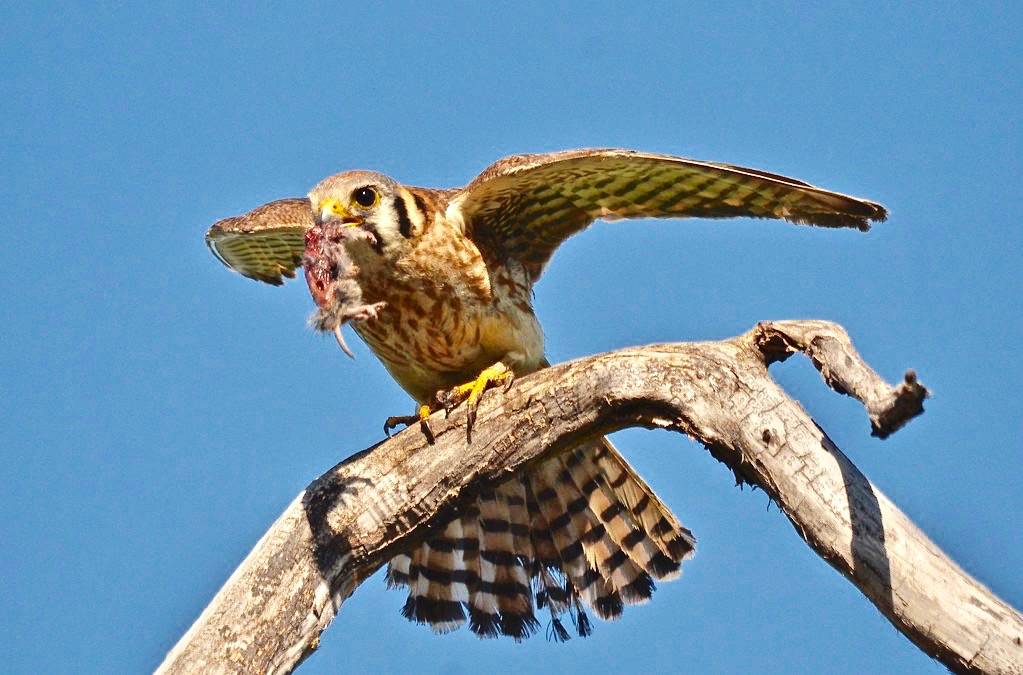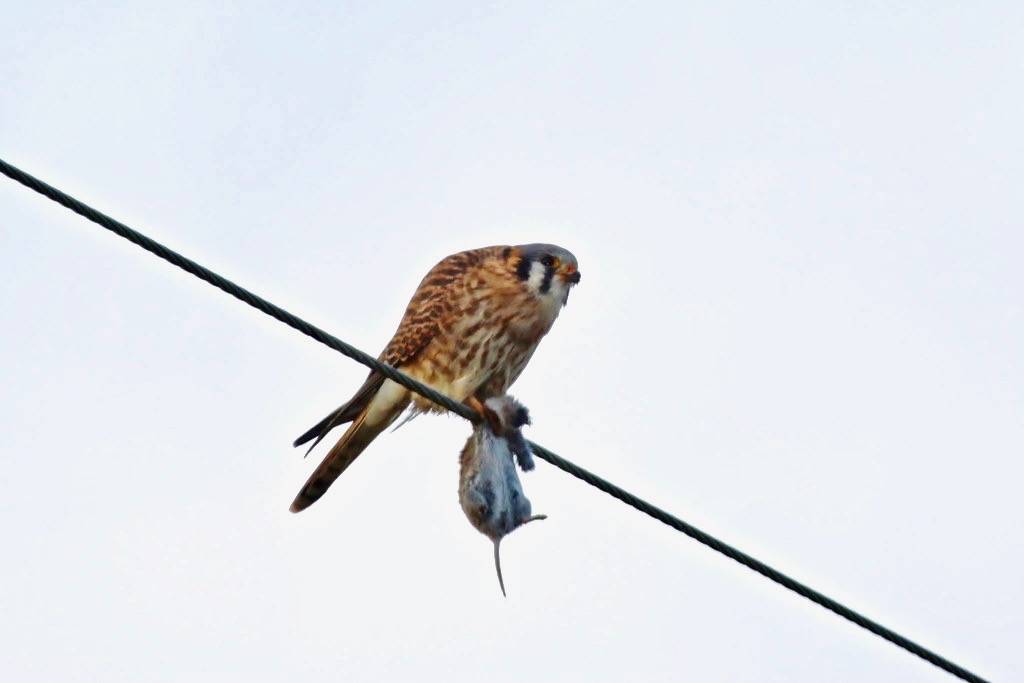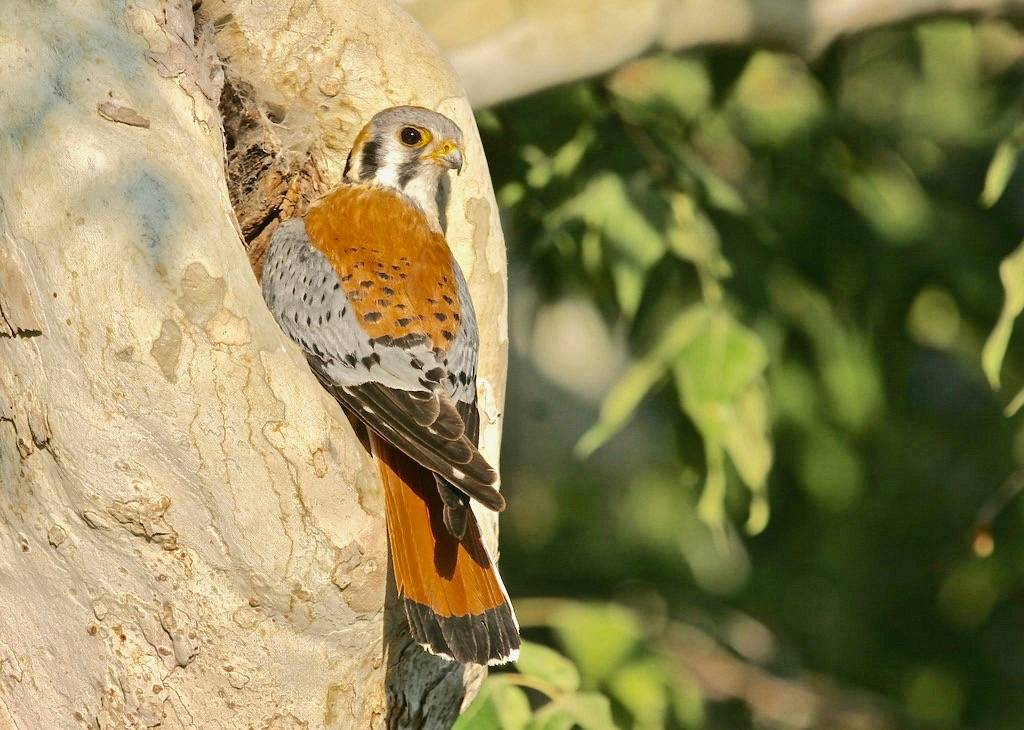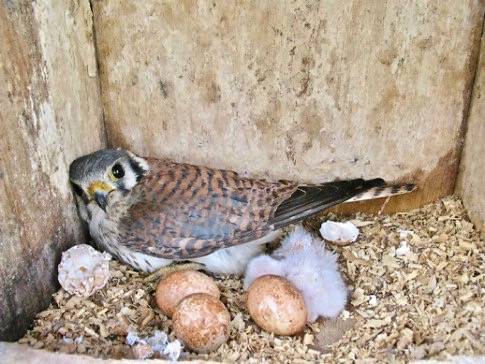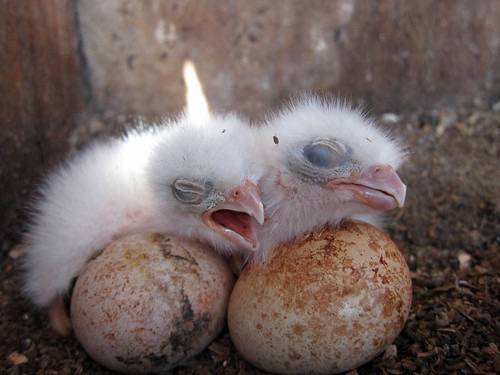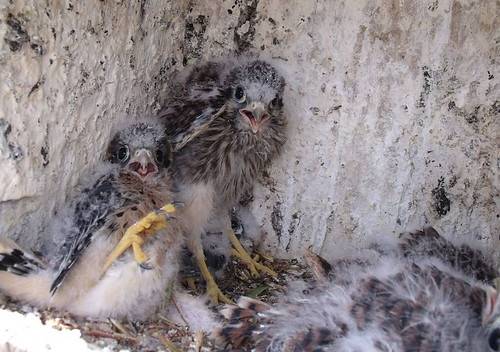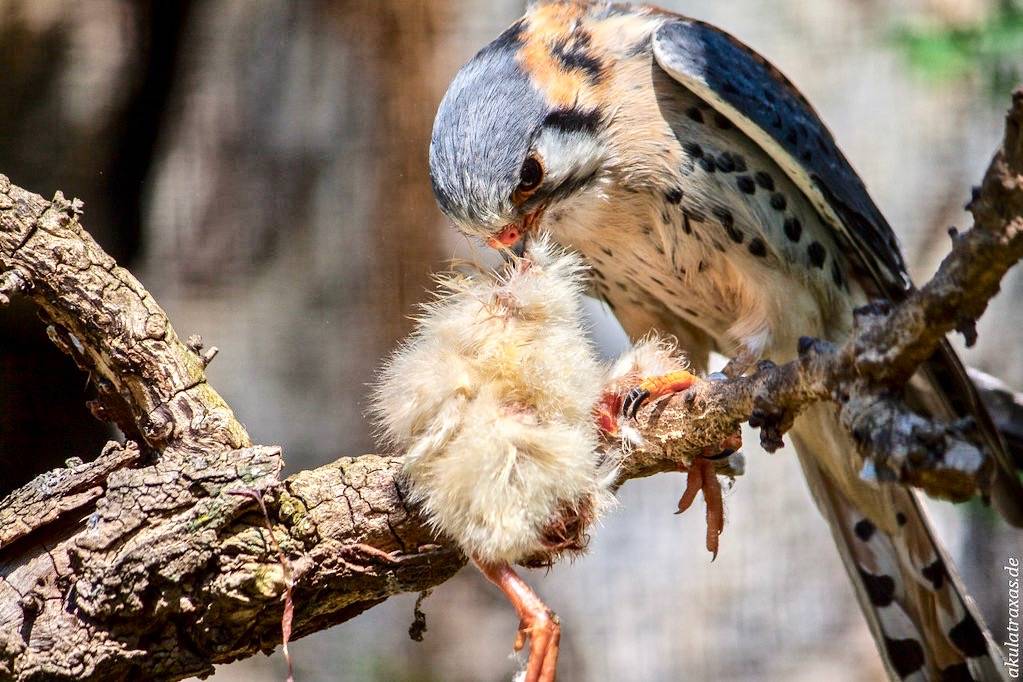American Kestrel
Although records of bird sightings for Salter Grove go back to 2002, there have been few sightings of the American Kestrel. Except for Audubon Field to the south of the park, Salter Grove does not include the kind of wide open habitats suitable for a Kestrel's hunting style.
The American Kestrel is the smallest and most common raptor in North America. Also the most colorful raptor, it ranges in size between a Blue Jay and a Mourning Dove with females slightly larger than males. It likes to perch above wide open spaces to scan and then swoop down on large insects like grasshoppers and dragonflies or hunt for rodents such as mice and voles. It can also hunt on the wing, in pursuit of small birds like sparrows. In the hands of a skilled falconer, the American Kestrel can be trained to bring down prey up to twice its five-ounce body weight.
Breeding Bird Survey data from the United States Geologic Survey indicate a steady, and at times steep population decline of this historically common kestrel. Unfortunately, researchers have not yet been able to pinpoint the factors causing these declines that started in the 60's.
American Kestrels readily breed in nest boxes and even in man-made cavities such as a vent in a concrete wall. Current conservation measures increase nesting habitat by providing nest boxes and emphasize the importance of gathering life history information to determine the points of vulnerability in the kestrel's life cycle.
For more information:
https://www.allaboutbirds.org/guide/American_Kestrel
https://www.audubon.org/field-guide/bird/american-kestrel
https://en.wikipedia.org/wiki/American_kestrel
https://providenceraptors.com/2016/08/29/double-brooding-american-kestrels-in-providence/
https://kestrel.peregrinefund.org/index.php?action=intro
http://www.biokids.umich.edu/critters/Falco_sparverius/

